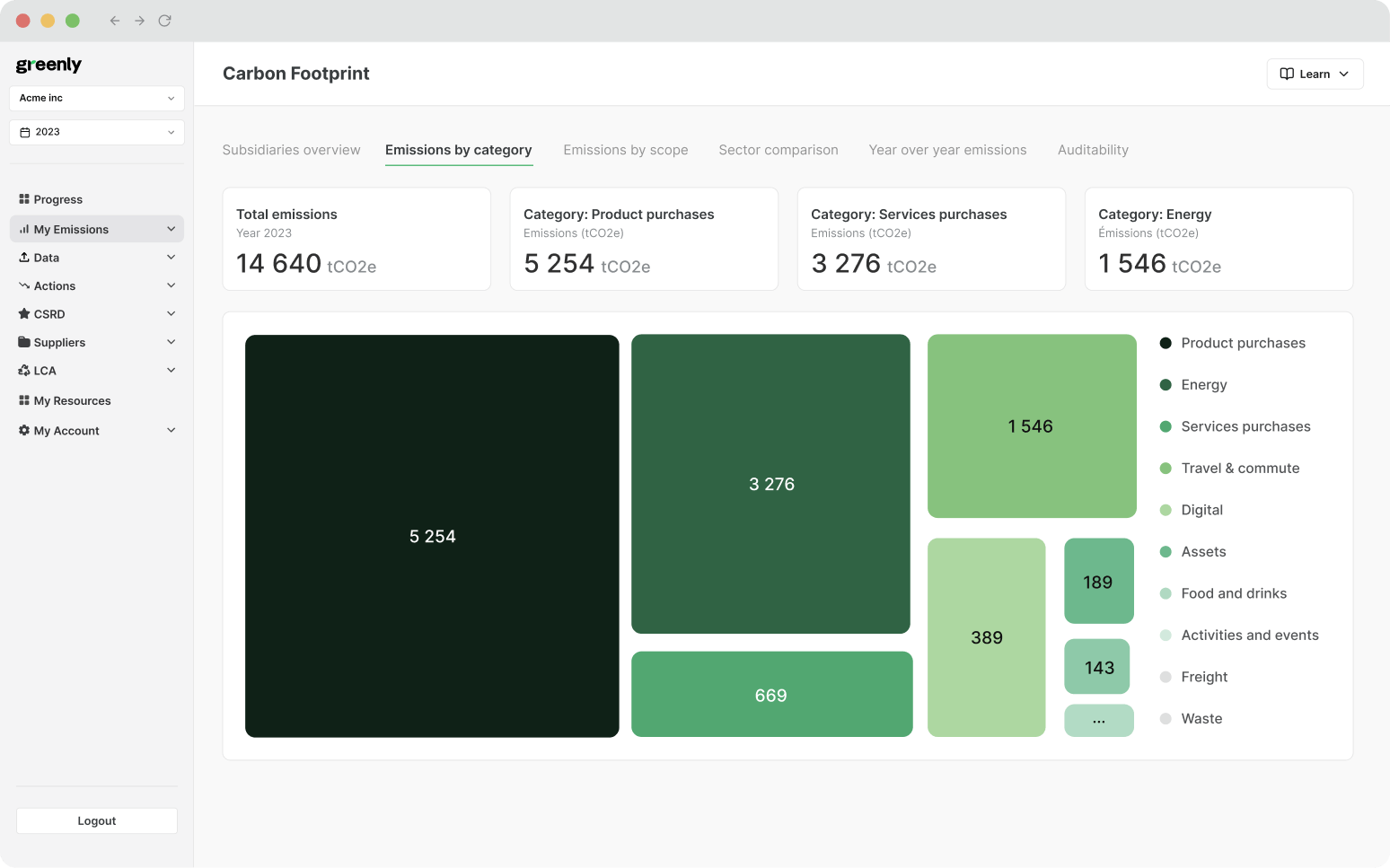
Sustainable Development Goals (SDGs): All You Need to Know
The United Nations has defined 17 goals, aimed at creating a better world. What are these so-called "Sustainable Development Goals" ? Explanations.
ESG / CSR
Industries



While interest in deep-sea mining has surged, global governance has struggled to keep pace. A July 2023 deadline passed without the adoption of binding international regulations, leaving the industry in a legal grey zone. As of 2025, the International Seabed Authority (ISA) is still racing to finalise a mining code amid mounting political pressure, scientific warnings, and calls for a global moratorium.
In this article, we’ll explore what deep-sea mining is, the international laws (or lack thereof) that govern it, and why so many scientists, countries, and companies are urging caution before mining the ocean floor.
As global demand for these metals intensifies, particularly for use in batteries, renewable technologies, and electronics, mining companies have turned their sights to the ocean as the next frontier. While traditional seabed mining has taken place in shallow coastal waters for decades (such as for tin, sand, or diamonds), deep-sea mining ventures are targeting far more remote and fragile ecosystems across the global oceans.
These materials typically accumulate over millions of years in three geological formations: polymetallic nodules, polymetallic sulphides, and cobalt-rich crusts.
Here’s a quick overview of the key resources and why they’re in demand:
| Resource | Where it's found | Why it's valuable |
|---|---|---|
| Nickel | Polymetallic nodules, sulphide deposits | Used in lithium-ion batteries for electric vehicles and renewable energy storage |
| Cobalt | Polymetallic nodules, cobalt-rich crusts | Essential for battery performance, especially in EVs; currently sourced mainly from the DRC |
| Copper | Polymetallic nodules, sulphide deposits | Critical for electrical wiring and green infrastructure like wind turbines and solar panels |
| Manganese | Polymetallic nodules | Used to strengthen steel and in battery chemistry |
| Rare Earth Elements | Cobalt-rich crusts | Used in electronics, wind turbines, and permanent magnets for electric motors |
| Zinc & Gold | Polymetallic sulphide deposits | Used in electronics, alloys, and as a store of value (gold); zinc also supports corrosion resistance |
The minerals targeted by deep-sea mining aren’t spread evenly across the ocean floor; they’re concentrated in specific geological formations in a handful of deep-sea regions. Most current exploration activity is focused on international waters, beyond the jurisdiction of any single country.
Here are the key deep-sea mining regions:
There are three primary types of deep-sea mining currently being explored. Each targets a different kind of mineral deposit, formed over millions of years in distinct geological environments.
Polymetallic nodules are small, potato-sized lumps scattered across vast stretches of flat seabed, particularly in the Clarion-Clipperton Zone. These nodules contain high concentrations of nickel, cobalt, copper, and manganese.
To harvest them, remote-controlled vehicles are sent to the ocean floor to collect nodules by vacuuming the top layer of sediment (typically the upper 5–10 cm). The nodules are then pumped to the surface through a vertical riser pipe system.
These metal-rich deposits form around hydrothermal vents – underwater volcanic systems that emit mineral-laden fluids. As the hot fluids mix with cold seawater, metals such as copper, zinc, iron, and even gold precipitate and build up into chimney-like structures.
Mining involves deploying cutting or drilling equipment to fragment and collect the mineral deposits directly from the seabed. These sites are usually found at depths of 1,000 to 4,000 metres along mid-ocean ridges.
Cobalt crusts form on the flanks of underwater mountains, where minerals slowly precipitate out of seawater and accumulate on exposed rock surfaces. These crusts are rich in cobalt, rare earth elements, and titanium.
Mining would involve robotic cutting tools that scrape or shear off the outer layer of the rock face, typically at depths between 800 and 2,500 metres.
Here’s a breakdown of the key environmental concerns linked to the different types of deep-sea mining:
Harvesting polymetallic nodules involves removing the top layer of the deep-sea bed, leading to the destruction of habitats for numerous species. A study revealed that even 44 years after experimental mining, the sea floor in the Clarion-Clipperton Zone (CCZ) showed little or no recovery, with long-lasting changes in sediment and reduced megafauna diversity.
The CCZ is home to biodiverse deep-sea creatures, with approximately 90% of species discovered in the area being new to science. Disturbing this environment could lead to the loss of unknown species and disrupt ecological balance.
Seabed mining tracks created by nodule collection remain visible for decades, marking long-term disruption to sediment structure and species recovery.
Hydrothermal vents are biodiversity hotspots, often supporting rare and endemic life. Mining activities around these vents can destroy these unique ecosystems and specialised organisms. These communities are adapted to extreme conditions and may not recover if disturbed.
Mining would destroy deep-sea ecosystems that remain largely unexplored, reducing opportunities for biological discovery and medical research.
These coral and sponge systems may have taken thousands of years to form. Extracting cobalt-rich crusts from seamounts can harm slow-growing corals and sponges that provide habitat for diverse marine life.
The removal of these structures may have long-term ecological consequences. Once damaged, there is no proven way to restore these seafloor habitats.
Mining stirs up clouds of fine sediment that can drift for kilometres, potentially smothering corals, sponges, and filter-feeders. Research indicates that sediment disturbances from mining can have significant impacts on ecosystems beyond the immediate mined areas.
Wastewater released from mining vessels can cloud the ocean's midwater column, impacting plankton, fish, and marine mammals that depend on clear, nutrient-rich layers.
Mining machinery generates continuous low-frequency noise, vibrations, and artificial light, potentially affecting marine species that rely on sound for communication and navigation.
Mining activities may release toxic substances, including heavy metals, into the marine environment, posing risks to marine life and potentially entering the food chain.
Recent research has uncovered a surprising discovery: metal-rich nodules may play a role in producing oxygen in the deep ocean through geochemical reactions. Removing these nodules could disrupt not just the habitat, but also oxygen levels in certain parts of the ocean floor.
Scientists have already warned that deep-sea mining will cause permanent damage to ocean ecosystems, which will also have a knock-on effect when it comes to coastal communities who rely on the ocean for their livelihoods. Given the geographic focus of deep-sea mining activities, it is Pacific Island communities that are likely to be most affected. Mining has the potential to affect fish populations and marine ecosystems, something that these communities rely on for food and income.
The deep ocean beyond national borders is considered the “common heritage of mankind” under international law, which means it can’t be claimed or exploited by any one country. But who gets to decide what happens there?
The answer lies in a United Nations treaty and the international body responsible for its implementation: the United Nations Convention on the Law of the Sea (UNCLOS) and the International Seabed Authority (ISA).
Adopted in 1982, UNCLOS is the key treaty that governs the use of the world's oceans. It defines the rights and responsibilities of nations with respect to marine resources, including the seabed.
Under UNCLOS, the seabed beyond national jurisdiction is known as “the Area”, and the mineral resources found there are designated as the "common heritage of mankind". This principle requires that benefits from any exploitation be shared fairly and that environmental protection is a priority.
Headquartered in Kingston, Jamaica, the ISA is the body responsible for regulating all mining activities in the Area. It oversees:
In 2021, the Pacific Island nation of Nauru triggered a provision in UNCLOS known as the “two-year rule”, forcing the ISA to complete regulations for commercial mining by July 9, 2023. If regulations were not adopted by that date, Nauru would have the right to submit a mining application, even in the absence of a legal framework.
As expected, the ISA missed the 2023 deadline. Despite years of negotiations, member states could not agree on key provisions, particularly around environmental safeguards, benefit-sharing mechanisms, and liability for damage.
In the absence of binding exploitation rules, many countries, scientists, and civil society organisations are pushing for a moratorium or pause on deep-sea mining.
Although no country or company has been granted permission to start deep-sea mining, many have already secured exploration contracts from the International Seabed Authority (ISA).
Even though exploration is not full mining, it’s not impact-free. Scientists warn that:
Environmental groups argue that exploration licences create a legal and financial pathway toward exploitation, and that allowing large-scale exploration before completing the Mining Code undermines the precautionary principle.
Under UNCLOS, only governments can apply for mining rights, but they can sponsor deep-sea mining companies to act on their behalf. As of 2025, over 30 exploration contracts have been issued by the International Seabed Authority (ISA), most of them sponsored by these countries:
| Country | Companies/Entities Sponsored | Type of Mining |
|---|---|---|
| Nauru | Nauru Ocean Resources Inc. (subsidiary of The Metals Company) | Polymetallic nodules |
| Tonga | Tonga Offshore Mining Ltd (also linked to The Metals Company) | Polymetallic nodules |
| Kiribati | Marawa Research and Exploration Ltd (TMC-affiliated) | Polymetallic nodules |
| India | Ministry of Earth Sciences (Gov’t body) | Polymetallic sulphides |
| China | China Ocean Mineral Resources R&D Association (COMRA) | Nodules, sulphides, cobalt crusts |
| Russia | Yuzhmorgeologiya (state company) | Polymetallic nodules |
| Japan | Japan Oil, Gas and Metals National Corporation (JOGMEC) | Cobalt crusts, sulphides (EEZ and ISA) |
| South Korea | Korea Institute of Ocean Science and Technology (KIOST) | Polymetallic nodules |
| France | Institut français de recherche pour l'exploitation de la mer (IFREMER) | Polymetallic sulphides |
| Germany | Federal Institute for Geosciences and Natural Resources (BGR) | Polymetallic nodules |
| Belgium | Global Sea Mineral Resources (GSR) | Polymetallic nodules |
| United Kingdom (until 2023) | UK Seabed Resources (formerly Lockheed Martin; sold to Norway’s Loke Marine Minerals in 2023) | Polymetallic nodules |
Most current exploration contracts focus on the Clarion-Clipperton Zone (CCZ) in the Pacific.
As of 2025, more than 30 countries have officially called for a moratorium, pause, or outright ban on deep-sea mining in international waters. Their reasons range from scientific uncertainty to environmental concerns and Indigenous rights.
| Country | Position | Details |
|---|---|---|
| France | Ban | President Macron called for a total ban in 2022 |
| Germany | Moratorium | Supports a pause until risks are better understood |
| United Kingdom | Moratorium | Reversed earlier support in 2023 |
| Canada | Moratorium | Strong supporter of environmental safeguards |
| New Zealand | Moratorium | Advocates ocean protection |
| Spain | Moratorium | Formally opposed at ISA |
| Portugal | Legal moratorium (national waters) | Imposed a 25-year ban in its EEZ in 2025 |
| Chile, Brazil, Ireland, Switzerland | Moratorium | Public declarations in ISA sessions and global forums |
| Palau, Fiji, Samoa, Vanuatu, Tuvalu | Moratorium | Pacific nations advocating protection of marine ecosystems |
Several major companies and investors have publicly pledged not to use or fund deep-sea minerals, at least not until stronger environmental safeguards are in place.
Google, BMW, Volvo Group, Samsung SDI, and Rivian have all signed the World Wildlife Fund’s moratorium pledge, committing not to source metals from the seabed.
Maersk took a firmer stance by divesting from The Metals Company in 2023, while Lockheed Martin exited the industry altogether, selling its subsidiary UK Seabed Resources that same year.
Deep-sea mining presents a dilemma with no easy answer. On one hand, the world urgently needs more minerals like nickel, cobalt, and rare earth elements to support the green transition. On the other hand, the risks to the deep ocean are profound and possibly irreversible.
Proponents argue that if we’re serious about ditching fossil fuels, we’re going to need a lot more metals and fast. Minerals like nickel and cobalt are critical for batteries, wind turbines, electric vehicles, and large-scale energy storage. The problem? Current terrestrial mining practices come with their own serious environmental and human costs:
Some see it as a potential “lesser evil” - a way to get the minerals we need without further degrading life on land.
But many scientists argue that we know too little about the deep sea to mine it responsibly and that moving ahead now could cause irreversible harm.
This tension is at the heart of the debate: how do we secure the materials needed to build a cleaner, net-zero energy future without undermining the planet in the process?
There’s no perfect solution. But while proponents of deep-sea mining argue it’s necessary for the energy transition, many scientists counter that we know too little about the deep sea to mine it responsibly, and that moving ahead now could cause irreversible harm. Others argue that instead of racing to mine the seafloor, we should invest more heavily in:
At Greenly, we help companies take meaningful climate action by making carbon management smart and scalable.
Our platform gives you the tools to:
Whether you're just getting started or looking to accelerate your climate strategy, we’ll meet you where you are. Request a free demo to see how Greenly can support your sustainability journey.
